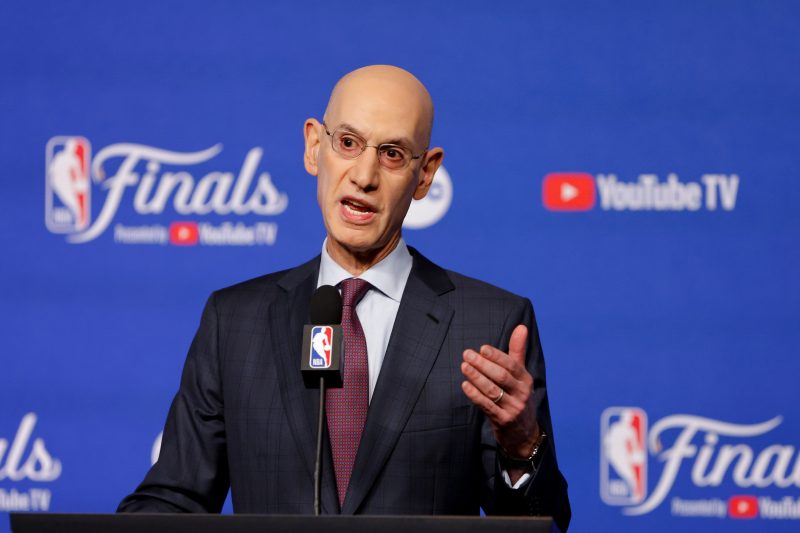Adam Silver once called NBA expansion manifest destiny.
It was Dec. 21, 2020, at the start of the 2020-21 season and shortly after the conclusion of the 2019-20 season in the Orlando bubble amid the COVID-19 pandemic.
But even manifest destiny comes with a murky timeline.
Nearly five years later, the NBA is not ready for imminent expansion.
The commissioner wasn’t wrong then. There will be NBA expansion at some point. There’s just not a definitive process today.
Silver told reporters on Tuesday, July 15, that the NBA will form a committee to explore the financial and on-court competitive issues around expansion and go from there. He called owners’ appetite for expansion “more as curiosity and more let’s do the work.
‘We also have this greater obligation to expand, if we do so, in a very deliberate fashion in a way that makes sense holistically for the league,’ Silver said.
Why – when there are markets, notably Seattle and Las Vegas, clamoring for an NBA franchise – has the NBA not moved faster on expansion?
To start, the league has been deliberate in its actions. Even when Silver made that “manifest destiny” comment in 2020, he said expansion was not on the front-burner of the league’s agenda.
In those five years, much has changed financially, especially with skyrocketing franchise valuations and the influx of money from the league’s 11-year, $76 billion TV deal that starts with the 2025-26 season.
The Boston Celtics have been sold on a $6.1 billion valuation, and with the way that sale is structured, there is a strong possibility that figure increases. The Los Angeles Lakers are being sold on a $10 billion valuation.
The NBA’s committee on expansion needs to determine the cost of an expansion franchise. Will it be $6 billion? $7 billion? Then, owners need to decide if that infusion of money is worth it in the long term because as Silver noted with expansion, ‘you are selling equity, and if for every additional team you add, you’re diluting the economics of the current league.’
The league would have to split its revenue with two extra teams, reducing the amount for each team. Here is crude mathematics: If 30 team owners are splitting $10 billion a year, that’s $333.3 million per team. Divide $10 billion by 32, that’s $312.5 million per team. That $20 million a year difference over several seasons adds up quickly.
It’s far more complicated than that, as Silver noted, but you get the idea. ‘It’s just one other factor we have to look at as we are trying to think what is the value of expansion, what does it mean to dilute the existing equity and how additive is this potentially to the league by adding an additional team,’ Silver said.
Adding two teams also means adding another 36 players which adds to Silver’s concern about spreading rosters too thin. ‘How it could potentially affect competition around the league, if we were to expand. How you would stock those teams, all those related issues,’ Silver said.
Silver also mentioned another form of expansion – the creation of an NBA-backed league in Europe, which potentially creates another revenue stream.
‘The fact that we would be creating new basketball teams in Europe is related,’ Silver said. ‘It’s separate but related to this notion around building additional organizations in the league. … Part of what we look at is how can we continue to grow this game on a global basis and how can we take advantage of the NBA brand to do that.’
Silver also mentioned the league needs to figure out where local broadcasting is headed as regional sports networks have struggled. ‘We would be malpracticing if we didn’t figure out how local and regional television is going to work before expanding. … Many of our teams have now taken significant cuts in regional television,’ he said.
Las Vegas, Seattle (or some other city), it’s not your time for expansion. Not yet anyway. There is one other option to monitor, and that’s relocation of a current franchise. That would come with a relocation fee that is less than a fee for an expansion team but still splits revenue among 30 teams.
‘A lot of analysis still needs to be done,’ Silver said. ‘Nothing has been predetermined one way or the other, and without any specific timeline. We’re going to be as thorough as possible and look at all the potential issues.’

